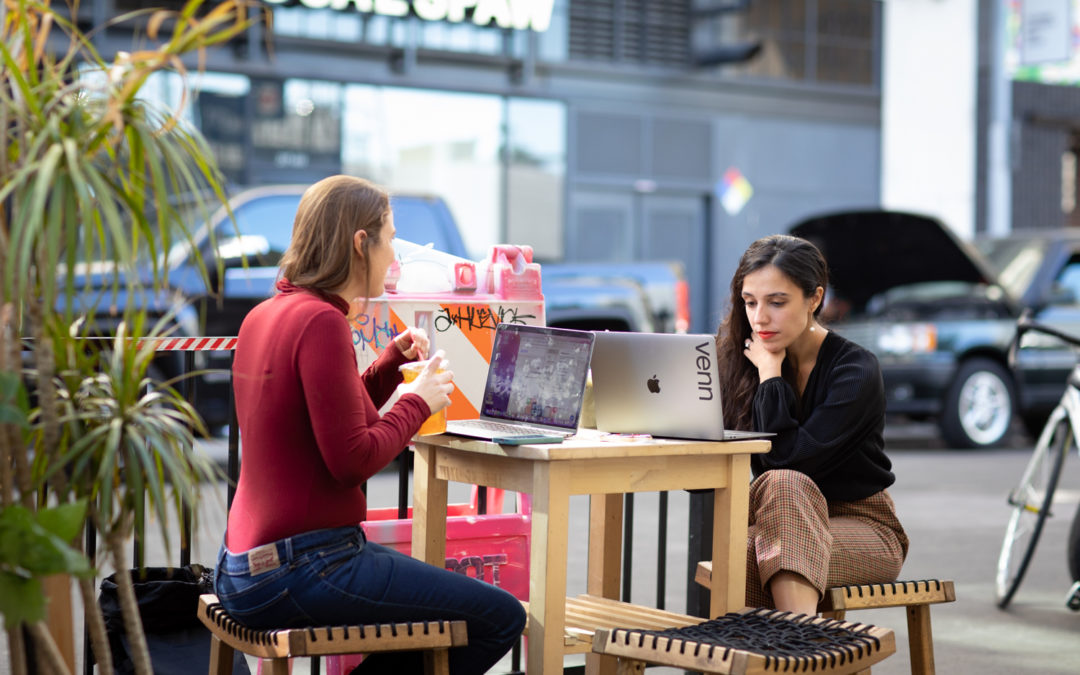IMPACT
The WFH Revolution: What it Means for Landlords and Property Developers
By
Erika Riley
– VOL. 13
We’re guessing your work life looks a little different than it did in the early days of 2020.
Whether it’s pajama pants hidden by the zoom frame, or perfecting your homemade pour-over game, one of the major differences is the experience of working from home, something 59% of workers whose jobs can be done remotely are choosing to do, according to a Pew Research Study from February.
And most people enjoy working from home — only about 10% of respondents said that they found it harder to work from home than in the office. While companies nationwide are asking employees to come back into work, enticing them with Lizzo concerts and terrarium-making classes, more and more companies are leaning toward a remote-friendly or hybrid model. It’s estimated that by 2025, an estimated 70% of the workforce will be working from home at least five days per month.
But as we all embrace this model more, we must also ask ourselves: How do we make our living spaces appropriate for both work and our day-to-day lives? As much as flexibility is great, sometimes having a bit of separation can be the key to success for remote employees.
WFH: Make it work for you
There are some things individual workers can do to make their spaces more work-from-home friendly. For example, whether you have a traditional 9-to-5 work schedule or have a bit more flexibility, it’s vital to create a schedule that works for you and your new work-from-home life. Avoiding the commute is great, but what will you do with that time instead?

In Downtown LA, where apartments are typically short on square footage, remote workers and creatives flock to outdoor coffee shops.
You may also want to create a designated spot to work in your home. If you don’t have room for a desk, consider using the breakfast bar or dining room table as a makeshift desk. But, give your brain a signal that it’s time for work, like making a full set-up with your keyboard, mouse, and work materials. Lighting a candle or putting the blinds in a certain position can even help transition into work mode.
Building a WFH-friendly community
The revolution is bigger than the home, however. Just like corporations and business owners, landlords and real estate developers need to be aware of the shift to work-from-home. Not everybody, especially in densely-populated cities, will have the room needed to create a home office. And for those living in small spaces, it can be difficult to spend all day at home, no matter how much they love their place.
Property owners should consider adding a business center or co-working space to their building to help remote workers get out of their apartments and around more people. After all, disconnecting with coworkers is one of the cons respondents cited in the Pew survey. Giving a chance for remote workers to connect will also help build a sense of camaraderie between neighbors.

In Kansas City, a property owner retrofitted an underused warehouse, making it into a multi-use community space for residents.
For those in warmer climates, landlords can even make a coworking space on a rooftop deck or patio. It can still be a social space during the evenings and weekends, transformed into a shared workspace during the day.
If you don’t have the room for a designated coworking space, consider striking a deal with a nearby coffee shop or cafe. Neighbors can work there and get a discount on items if you promote them to the community.
Landlords can also entice new tenants by advertising their work-from-home spaces, or their remote-work-friendly apartments. According to a Rentcafe survey, one in three renters wants to upsize their apartment for work or family reasons. Open concept studios are great for some artists and creatives, but others will want a more designated space to work. Consider advertising your apartments’ dining nooks as home offices, or use half-walls to create a designated work space in your apartments’ living rooms.
However businesses and landlords choose to deal with it, working from home is an unstoppable movement. The question now is how to adapt.
More from the Venn Journal







Recent Comments